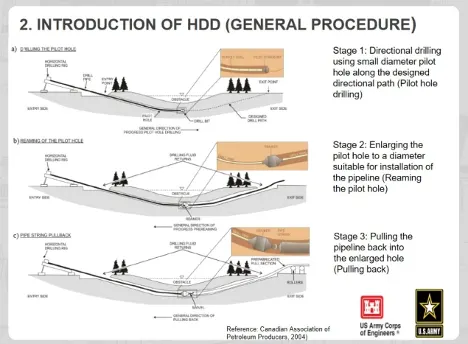Drilling fluid spill in the Mississippi River. Photo by Nancy Beaulieu
Who is watching out for our public waters?
Who is holding Enbridge accountable?
As of August 10, 2021, the Minnesota Pollution Control Agency (MPCA) reports that 63% of northern Minnesota’s horizontal directional drilling locations have polluted our public waters. In a public statement, MPCA shared its summary of the harm caused (so far) by Enbridge as crews drilled beneath our waterways to construct the Line 3 tar sands oil pipeline.
As #Line3 river crossing work finishes up, 12 river crossings had inadvertent releases of drilling fluid. Some of these river crossings had multiples releases, including East Savannah and Willow. We are still investigating these releases.
— Minnesota Pollution Control Agency (@MnPCA) August 9, 2021
There was one release into a river. There were 13 inadvertent releases into a wetland, which is not allowed under our 401 certification. There were 14 additional inadvertent releases in non-surface water areas, although one of these releases flowed into a wetland.
— Minnesota Pollution Control Agency (@MnPCA) August 9, 2021
Alarming Line 3 Numbers
MPCA’s tweets offer a count of “inadvertent releases of drilling fluid” cause by Enbridge during the Line 3 horizontal directional drilling (HDD).
28 |
The number of unique spill incidents (1+13+14) |
12 |
The number of HDD crossings where Enbridge polluted the water with drilling fluid |
63% |
The percentage of HDD crossing where Enbridge spilled drilling fluid into the water or wetlands (12 of 19 crossings); Conversely, this means only 27% of HDD operations were done without incident. |
80% |
The percentage of HDD-impacted rivers into which Enbridge released drilling fluid (12 out of 15) |
Many unanswered questions
It is unclear what the MPCA intends to do about any of this. Per the MPCA’s tweet, many of these spills violate the permits that MPCA granted Enbridge. How many violations must occur before the government halts construction to investigate possible negligence?
What is the charge of MPCA?
“The Minnesota Pollution Control Agency is a state agency committed to ensuring that every Minnesotan has healthy air, sustainable lands, clean water, and a better climate. Through the authority of state and federal statutes and guidelines, the Agency focuses on preventing and reducing the pollution of air, land, and water, and leads Minnesota’s efforts to protect against the devastating effects of climate change.”
With the task of “preventing and reducing pollution of air, land, and water…” could MPCA not have foreseen this problem?
What responsibility does MPCA have to hold Enbridge accountable?
Is MPCA living up to the duty to protect the water and land?
Who is guarding our natural resources and what we love most about Minnesota for future generations?
With this many problems during construction before the pipeline even is operation, MPCA needs to pull permits and take action to clean up this mess. Instead, it seems like MPCA’s inaction on the spills is helping Enbridge.
Horizontal Directional Drilling

Enbridge Line 3 will travel 337 miles across northern Minnesota, crossing 200+ water bodies along the way. The overall plan is to trench through these crossings, but at 21 different crossings, Enbridge is tunneling underneath the waterbody, using a process called Horizontal Direction Drilling (HDD). Enbridge will use HDD to tunnel under the Mississippi River at two separate locations.
During HDD, the company will use a large auger to bore under the water body. It uses “drilling mud” as a lubricant and to keep the tunnel open. Once the tunnel is drilled, they will put the pipeline through the tunnel.
The major concern is the “frac out,” where the drilling mud seeps through the cracks in the subsurface soils and eventually pushes its way to the surface and into the water body. The industry refers to this process as “an unintended” return of drilling fluids to the surface. We are calling it what it is—pollution and contamination of our waterways.
See the Line 3 HDD locations on Watch the Line’s project map.
CURE stands with Minnesotans who oppose Line 3 and any new pipeline projects.
Line 3 threatens Anishinaabe land, wild rice beds, and cultural ways of life.
Line 3 cuts through the headwaters and imperils the entire Mississippi River Watershed.
Line 3, and other new pipeline projects, lock us into unneeded fossil fuel infrastructure and exacerbates the climate crisis.
The Line 3 Project is already obsolete. We do not need the tar sand oil that Line 3 is carrying to support our energy supply. This tar sand oil is being exported to other countries that have less regulation and pollution control standards. If we genuinely cared about our natural assets, our public health, clean water for future generations, and the increasing escalation of climate change, our state and federal public leaders would stop this project now.
What can you do?
Call the Army Corps Office | Jamie Pinkham – 202-761-5903 or 202-761-1878
I want the Army Corps of Engineers to stop the construction of Enbridge’s Line 3 pipeline by revoking their 404 water permit. There have already been too many permit violations to trust the Minnesota State government to oversee this project. The Line 3 pipeline is a threat to our climate, water, and violates treaty rights.
Tell the Army Corps of Engineers to STOP LINE 3 | Action Alert
Call Governor Walz & Lt. Gov. Flannagan | 651-201-3400
Call MPCA – Katrina Kessler, Asst. Commissioner for Water Policy and Agriculture | 651-296-6300
Tell President Biden to STOP LINE 3 | Action Alert
Call or write your Representatives and Senators (Find out who represents you!)
More on Line 3
Enbridge Line 3 harms state forests, Wildlife Management Areas.
Heavy weights used to hold Line 3 pipeline down in wetlands.
MPCA: Line 3 drilling fluid spilled into wetlands
Peg Furshong, CURE Operations and Director of Programs


